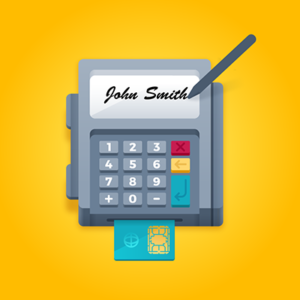Signature Capture
Merchant Requirements

We started our signature capture initiative by focusing on understanding our merchant’s requirements from two perspectives:
What is meant by "Signature Capture"?
- Signature capture normally involves the following activities:
- Signature Capture - Using a pinpad or signature pad to electronically capture information that can be converted to a valid image format.
- Conversion – Conversion of the captured information to a valid graphics image format that can for example, be displayed on a computer display.
- Image Display - Displaying the image on display device, document, or receipt.
- Saving Image – Saving a hard copy and/or electronic copy of the image.
- Centralized Image Repository – transporting the image to a location where it is archived for future use.
- Authentication - Use of the image for authentication purposes.
Why would one want to capture signatures?
- We saw two major scenarios when it comes to signature capture:
- Scenario 1 - Capture the signature as part of running a payment card transaction. This is commonly done in a retail environment when processing a customer-present, card-present credit card or debit card transaction.
- Scenario 2 – Capture the signature independent of running a payment card transaction. This is common in environments when no payment transaction is made at the time of sale. This might be described as an “on-account” transaction and the actual payment is done at another time. Therefore, it is a card-not-present transaction.
Next Step
- Next we defined several technical challenges related to capturing signatures. Before going forward, we implemented several prototypes to confirm that we could resolve those technical issues which we believed were critical to our success.
Additional Information on Signature Capture
For additional information on Signature Capture, please look at our our Signature Capture page.